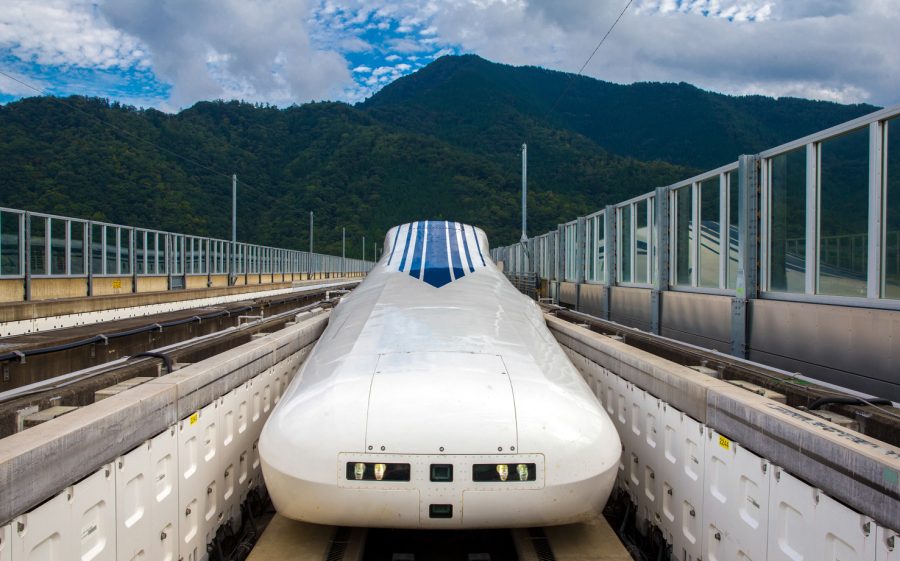Japan’s Levitating Trains
Japan’s SC Maglev is one of the world’s fastest trains that hits a speed of about 300 miles per hour. This train has been in development since 1962 and is a big step towards the future of trains. It has a magnetic levitation system that uses strong magnetic forces for operation, acceleration, deceleration, guidance, and levitation.
How Does The Train Work?
Maglev trains levitate between the walls of a concrete structure known as a guideway. These U-shaped guideways have walls surrounding trains on both sides, which makes the system free from derailment. A large number of magnets provide controlled tension for lift and propulsion along a track.
Cost
High-speed Maglev infrastructure is pretty expensive to build, but Maglev trains are less expensive to operate and maintain than traditional high-speed trains or planes. At higher speeds, most of the power needed is used to lessen air drag. While Maglev trains are more efficient, they are currently not more efficient than modern high-speed rail.
Environmental Benefits
Maglev trains, if used on a greater scale, will have big environmental, safety, and economic benefits. They will reduce pollution (carbon dioxide emissions), provide greater and safer travel at lower cost, and reduce dependence on oil. Rather than using oil, the SC Maglev consumes some 0.4 megajoules per passenger mile compared to 4 megajoules per passenger mile of fuel for an 8.5-kilometers-per liter auto that carries 1.8 people at 96 kilometers per hour.
Why There Is Hesitancy
It may seem like Maglev trains should be everywhere, replacing the traditional train just as cellphones replaced the payphone. However, there are a few reasons industry heads are hesitant to institute Maglev technology. The magnetic coils and material used in the set up of the train are very expensive, making it more costly to build Maglevs than conventional steel railway tracks. Maglev trains require a new setup from scratch. So it may be a long time until we see Maglevs across the globe, but Japan’s SC Maglev is definitely a step in the right direction.
To learn more about Maglevs:







